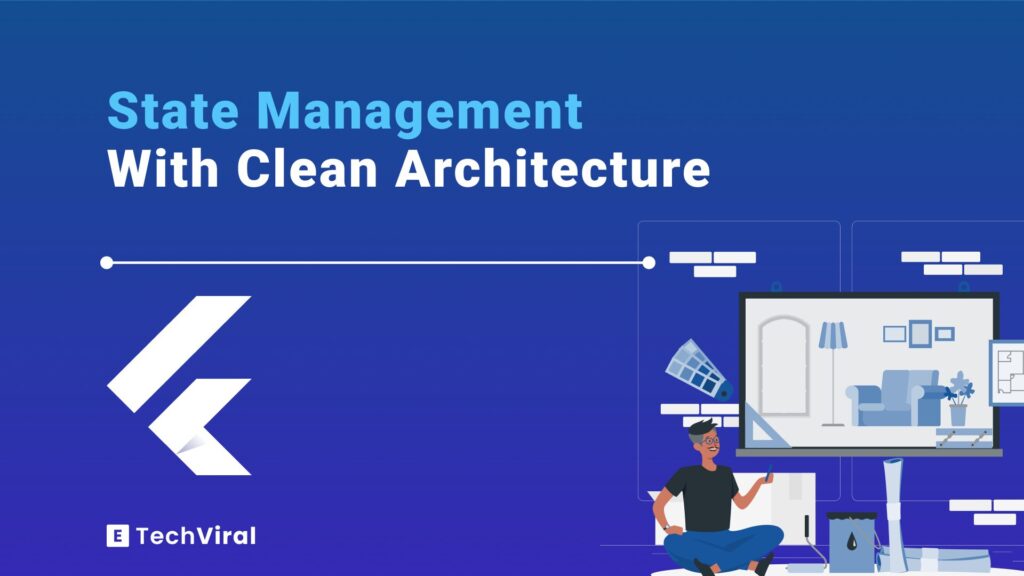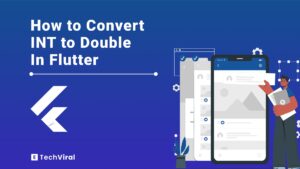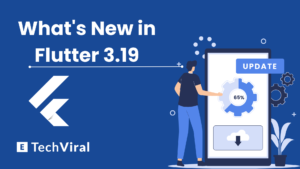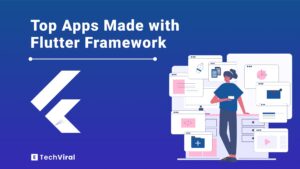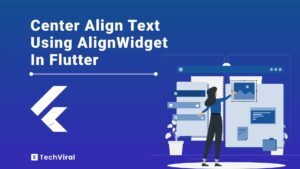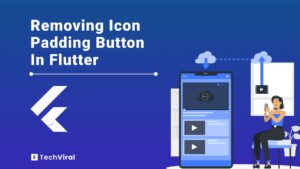Ever used state management and clean architecture? Here we’ll explore how these two key concepts help in building better apps. Clean architecture is all about organizing your code well, making it easier to handle large projects. State management is how we keep track of changes in the app, like user inputs or data updates.
By combining state management and clean architecture, we can make apps that are not only powerful but also easy to update and fix.
Whether you’re new to Flutter or looking to improve your skills, this guide will help you understand and apply these ideas in a practical way. Let’s get started on making your Flutter apps better!
Understanding Clean Architecture
Clean architecture is all about organizing your code in a way that makes it easier to manage, especially for large projects. Here’s what you need to know:
Principles of Clean Architecture
It’s based on the idea of separating code into layers, with each layer having its own responsibility. The most important rule is the Dependency Rule, which means that dependencies can only point inwards. The outer layers (like UI) can depend on the inner layers (like business logic), but not the other way around.
Components of Clean Architecture
- Entities: These are the core business rules of your app. They are the least likely to change when something external changes.
- Use Cases: These contain application-specific business rules. They orchestrate the flow of data to and from the entities, and direct those entities to use their critical business rules to achieve a goal.
- Controllers/Presenters: They belong to the outer layer and are responsible for dealing with input and output. They take data from use cases and prepare it to be displayed in the UI.
Significance in Flutter
In Flutter Clean architecture, applying clean architecture means your code is more organized, easier to test, and easier to maintain. It helps keep your UI, business logic, and data sources separate, making your code less prone to errors and easier to navigate. clean architecture make easy error handling for developers because when your code is clean you can uderstand it and manage it easily.
The Role of State Management in Clean Architecture
State management is crucial in Flutter app development, and its role becomes even more significant when integrated with clean architecture.
Let’s break down why and how this integration is beneficial:
What is State Management?
In simple terms, state management is about keeping track of all the changes in your app’s state — like user inputs, server responses, or internal data changes. It’s crucial for ensuring that your app responds correctly to these changes.
Decoupling State Management: In clean architecture, state management is kept separate from the UI and business logic. This means your app’s state changes don’t directly affect how things are displayed or the core business processes. Instead, state changes are handled in a controlled and predictable way.
Benefits State Management in Flutter Apps
- Modularity: By separating state management, you can change your app’s state handling without affecting the business logic or UI. This makes your app more modular and easier to update or fix.
- Testability: Separation makes it easier to test your app. You can test business logic without worrying about the state management logic and vice versa.
- Maintainability: With a clear structure, your app is easier to maintain. When state management is decoupled, it’s easier to track issues and update parts of your app without unintended consequences.
Implementing State Management in Flutter
There are various ways to implement state management in Flutter, like using Provider, BLoC, Redux, etc.
The choice depends on your project’s needs and complexity. But regardless of the method, the key is to keep it separate from the business logic and UI layers as prescribed by clean architecture.
Practical Solutions for Implementing State Management and Clean Architecture in Flutter
Implementing state management effectively within the clean architecture framework in Flutter involves a few key strategies.
Here’s a step-by-step guide to help you set up your project:
Project Setup:
- Create a Flutter Project: Start by creating a new Flutter project. Organize your project directory to reflect the layers of clean architecture: Presentation, Domain, and Data.
- Layer Separation: In the Presentation layer, include your UI components. The Domain layer will contain your business logic, such as entities and use cases. The Data layer handles data sources, like APIs and local databases.
Integrating State Management:
- Choose a State Management Solution: Decide on a state management approach (e.g., Provider, BLoC, MobX). Your choice should align with your project’s complexity and your team’s familiarity with the pattern.
- Implementing the Pattern: Apply the chosen state management pattern in your project. For instance, if using BLoC, you would define Blocs in the Presentation layer, which will interact with Use Cases in the Domain layer.
Dependency Injection:
- Use Dependency Injection: This is crucial for decoupling the layers. Use packages like get_it or provider to manage dependencies. Inject your Use Cases into your Blocs or ViewModels.
Connecting Layers:
- Data Flow: Ensure data flows from the Data layer (APIs, databases) to the Domain layer (Use Cases), and then to the Presentation layer (UI).
- State Updates: Handle state changes in the Presentation layer using your state management solution, which then reflects these changes in the UI.
Testing Each Layer:
- Unit Testing: Write unit tests for each layer. Test Entities and Use Cases in the Domain layer, Data retrieval and storage in the Data layer, and UI state changes in the Presentation layer.
Iterate and Refine:
- Continuous Refinement: As your app evolves, continuously refine your implementation, ensuring each layer’s responsibilities remain clear and well-managed.
Comparing Techniques: State Management within Clean Architecture
In Flutter, several state management techniques can be integrated with clean architecture. Each has its own advantages and challenges.
Let’s compare some popular ones:
Provider:
- Pros: Easy to use and understand, especially for beginners. It integrates smoothly with Flutter, offering a reactive way to manage state.
- Cons: Can become cumbersome in very large applications or when managing a complex state.
- Best For: Small to medium-sized projects where simplicity and ease of use are priorities.
Bloc (Business Logic Component):
- Pros: Offers more control and separation of concerns, adhering closely to clean architecture principles. It’s great for complex state management and larger applications.
- Cons: Has a steeper learning curve and can lead to more boilerplate code.
- Best For: Larger, more complex projects where scalability and maintainability are key.
Redux:
- Pros: Brings a predictable state management system, with a single source of truth. It’s excellent for complex states and offers powerful debugging tools.
- Cons: Can be overkill for small projects and has a significant learning curve.
- Best For: Large-scale applications where state predictability and consistency across the app are critical.
MobX:
- Pros: Highly reactive and scalable. MobX makes state management intuitive with its observable states, actions, and reactions model.
- Cons: Might feel less structured to developers used to more rigid frameworks, and it requires understanding of reactive programming concepts.
- Best For: Projects where a reactive and intuitive state management solution is needed, suitable for both medium and large applications.
Examples:
- Provider Example: A simple counter app where tapping a button updates the count displayed on the screen. Provider is perfect for this level of state complexity.
- Bloc Example: A shopping app with a cart, user profiles, and product listings. Bloc can effectively manage the different states involved in user interactions, network requests, and local database updates.
- Redux Example: A complex social media app where state changes need to be predictable across multiple screens and user interactions.
- MobX Example: An interactive game app where the state changes frequently and needs to be reactive to user inputs and game events.
The choice of state management technique depends on the complexity of your app, your team’s familiarity with the pattern, and the specific requirements of your project. In the next section, we’ll look at real-world applications of these principles.
Conclusion
Mastering state management and clean architecture is crucial for success in Flutter development. This approach keeps your Flutter apps well-organized and easy to manage. By effectively combining state management techniques like Provider, BLoC, Redux, or MobX with clean architecture, you ensure your app runs smoothly and is easy to update. As seen in real-world Flutter apps, this combination works wonders. Keep focused on state management in clean architecture as you develop with Flutter, and you’ll be able to create excellent, well-structured apps.
FAQs
What is state management in Flutter?
State management in Flutter refers to handling how data or the state of the app changes over time. It’s about managing what the app displays and how it behaves when users interact with it or when there are data updates.
Should I use state management in Flutter?
Yes, state management is essential in Flutter. It helps in efficiently managing the app’s state changes, leading to better performance optimization in clean architecture, more structured code, and an improved user experience.
Which state management is best for Flutter?
The “best” state management for Flutter depends on your project’s complexity and your familiarity with the concepts. Popular choices include Provider for simplicity, BLoC for more complex logic, Redux for large-scale apps requiring a single source of truth, and MobX for reactive programming.
Is MVVM a state management?
MVVM (Model-View-ViewModel) is not strictly a state management pattern; it’s more of an architectural pattern for separating business logic from UI code. However, the ViewModel component in MVVM often deals with managing and exposing the state to the UI, which is a key aspect of state management.
What is state management in Dart?
State management in Dart, especially in the context of Flutter, involves managing the state of a Dart application. It’s about tracking and controlling the flow of data and changes within the app, ensuring the UI reflects the current state.
How do you explain state management?
State management is a concept in software development that refers to managing the state of an application, which includes tracking user inputs, changes in the app’s data, and the control flow of the app. It ensures the app responds correctly to different inputs and states, making the app interactive and dynamic.

